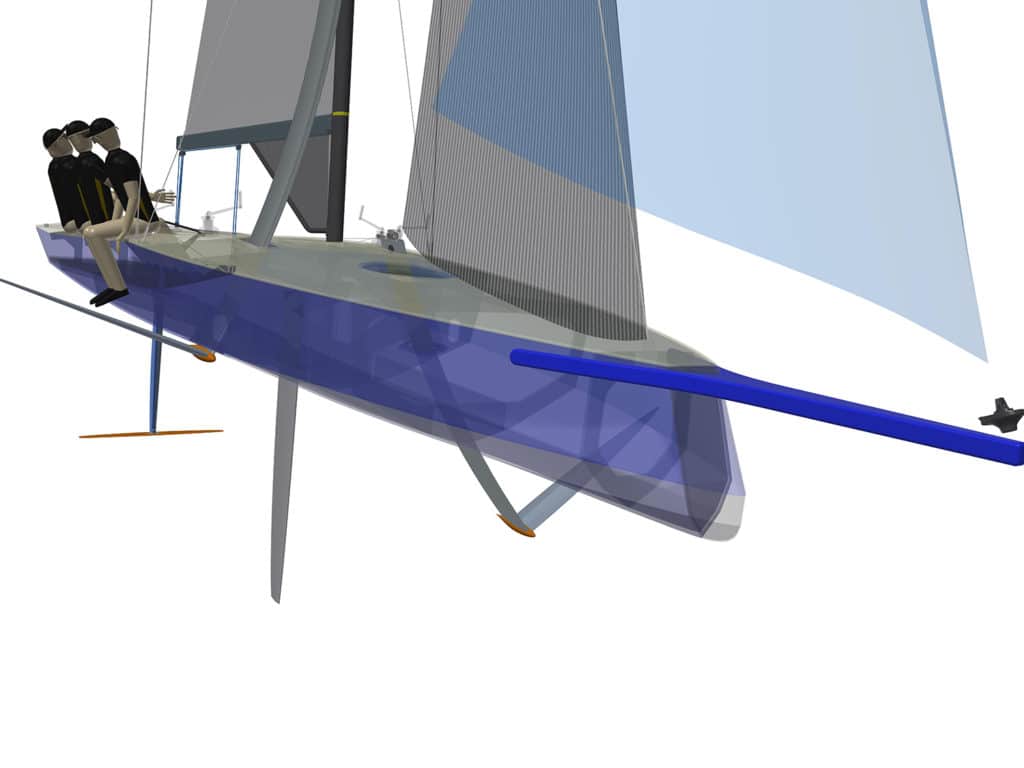
The Royal New Zealand Yacht Squadron has released the framework for its edition of the Youth America Cup, to be contested before the 36th America’s Cup Match in Auckland in March 2021. For young elite sailors looking to crack into sailing’s main event, the announcement comes as welcome news, but it also comes with a heightened sense of urgency. In less than 12 months, hopeful squads, must form, fundraise and qualify, with no guarantee of making the finals.
The San Francisco edition of the Cup was the first time the event had established a youth sideshow of sorts. With the backing of Red Bull, national teams were hastily trained on the AC45s and delivered a captivating series to onshore spectators during Cup-racing interludes. The hard-charging New Zealand squad—led by a young, wickedly fast and relatively unknown kid named Peter Burling—won the series and celebrated their rock star status with a big night of club hopping on the Red Bull party bus. In 2017, British pro sailor Rob Bunce helmed Land Rover Ben Ainslie Racing’s AC45F to the top of the heap in the final race of the Red Bull series in Bermuda. While the foiling catamarans of that event required a skillset unfamiliar to most young sailors at the time, so too will the 30-foot foiling monohull (“AC9F”) designed for the series.
A December 12 Entry Memorandum from the RNZYS lays out the regatta’s specifics to prospective competitors, and while it’s early days yet, there’s plenty to glean from both the Notice of Race and the Memorandum. First, in line with the America’s Cup Deed of Gift, teams must challenge through accepted yacht clubs. The narrow window to challenge is between December 2019 and February 28, 2020. Once accepted, $75,000 in staggered entry fees and a $16,000 damage deposit must be advanced to the RNZYS. The entry fee includes charter/use of an AC9F for official races and only 10 hours of training time on the boat. Teams are on the hook for their own insurance, one branded jib, and a litany of costs, from coaches, training and travel. The cost to play is not insignificant.
“You’d be looking at a budget of $200,000—minimum,” says Carson Crain, of Houston, Texas, who founded and led the U.S. Next Generation team’s efforts in Bermuda. “Ours was $300,000 and that was relatively lean. The biggest expense we had was charter fees for training with the GC32 and the AC45F.”
Individual sailors must be “licensed” to sail the AC9F and the road to Auckland starts somewhere in China (a location “to be determined”) with a fleet-race seeding event in November 2020. From this, the top 20 teams (should there be as many) will continue to Stage 2, a late February 2021 match-racing event in Auckland. The top-10 teams then advance to Stage 3, in early March, another round-robin match-race series. According the NOR, only seven boats will be “provided” for the series and allocated by daily draw.
All crew members must be members of the challenging club, and not less than three must be passport-carrying nationals. Crain, who aged out of the regatta’s 18- to 25-year-old age bracket, says he would jump at the chance to compete again, if he could, but otherwise, he’s happy to consult any would-be teams. “My biggest piece of advice is to first develop a business plan,” Crain advises. “Don’t focus on winning. Focus first on getting to the starting line.”
And that means not just convincing the commodore to challenge, but “making sure the club’s board and the sailing foundation is willing to support the challenge and help raise money. Having the right leadership at the club level is critical. If you have buy-in from club and have the right people behind you, the challenge will be strong. It’s very difficult being an athlete on the boat and managing the team at the same time.”
Time, of course, will be the greatest burden teams will face, and Crain advises wasting none of it. “As soon as possible, you’re going to want to have your sailors training on small foilers and working on team dynamics, on any high-performance boat you can get your hands on.”









